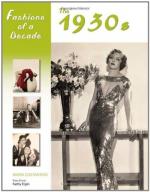|
This section contains 142 words (approx. 1 page at 300 words per page) |

|
The American automobile industry embodied the weaknesses of the national economy in the late 1920s. Throughout the heyday of the 1920s the industry saturated the market with cars by coming out with new models each year and encouraging buyers to purchase new models rather than maintaining existing ones. Consumers traded in their now "old" cars for rebates and agreed to pay for new cars over a three-year period. The line between so-called old and new cars was established through design and styling. While such emphasis on styling brought important innovations to car design, this selling strategy based on planned obsolescence also left automakers such as Ford, Chrysler, and General Motors (GM) short of cash, as they invested capital in producing new styles. In addition, manufacturers and dealers had lots full of well-running used cars.
|
This section contains 142 words (approx. 1 page at 300 words per page) |

|




